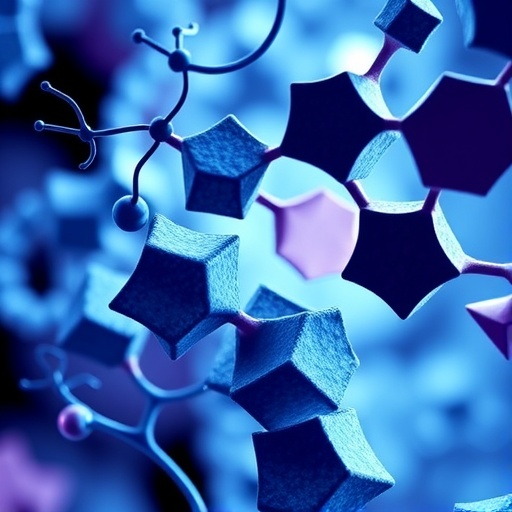In the relentless pursuit of understanding cancer’s most insidious genetic alterations, researchers often confront an elusive adversary: structural changes hidden deep within tumor DNA that are both profoundly damaging and notoriously difficult to detect. These genomic aberrations, which fuel the uncontrollable proliferation of cancer cells, evade conventional testing methods especially when limited or compromised tissue samples are involved. Addressing this critical challenge, a team of scientists at Mayo Clinic has unveiled an innovative sequencing tool known as BACDAC, designed to illuminate these concealed patterns of genomic instability with unprecedented clarity.
BACDAC is not simply another addition to the genomic analysis toolkit; it represents a breakthrough in detecting the ploidy state of tumors by leveraging whole-genome DNA sequencing, even when confronted with low-purity or low-coverage samples—a frequent stumbling block in clinical genomics. Ploidy, the number of complete chromosome sets within a cell, is a fundamental biological parameter that cancer cells dramatically distort. While healthy human cells maintain a diploid state with two chromosome sets, malignant cells often display gains or losses in entire chromosome sets—a hallmark of genomic chaos that propels unchecked growth and therapeutic resistance.
The technical prowess of BACDAC lies in its ability to map allelic copy number variations across the genome through sophisticated computational algorithms that handle sparse data without sacrificing accuracy. This feature is particularly vital as it allows the tool to work effectively even in challenging scenarios where standard next-generation sequencing (NGS) might falter due to sample degradation or low tumor content. By quantifying these alterations, BACDAC offers a window into one of the most aggressive forms of chromosomal instability: whole-genome doubling, where the tumor’s entire DNA content is duplicated, essentially doubling its genomic material.
.adsslot_3u91zeBAKE{width:728px !important;height:90px !important;}
@media(max-width:1199px){ .adsslot_3u91zeBAKE{width:468px !important;height:60px !important;}
}
@media(max-width:767px){ .adsslot_3u91zeBAKE{width:320px !important;height:50px !important;}
}
ADVERTISEMENT
This phenomenon of whole-genome doubling has been closely linked with aggressive tumor phenotypes and poor clinical outcomes since it enhances the tumor’s ability to adapt and survive therapeutic assaults. Prior to BACDAC, detecting such large-scale genomic events required high-depth sequencing and often fresh, high-quality specimens, limiting practical clinical application. The new method’s scalability and robustness promise to overcome these limitations, enabling broader incorporation into both research and clinical diagnostics.
Beyond raw data, BACDAC introduces an innovative visualization technique known as the Constellation Plot. This bespoke graphical representation distills complex genomic data into an accessible, intuitive map that reveals the chromosomal stability or turbulence within a tumor. For clinicians and pathologists who wrestle daily with interpreting genomic information, the Constellation Plot could transform overwhelming data into actionable insights, streamlining decision-making processes crucial for personalized cancer therapy.
Developed through rigorous research involving the genomic analysis of over 650 tumor samples across 12 distinct cancer types, BACDAC’s validation process underscores its broad applicability and robustness. This comprehensive dataset enabled the researchers to benchmark the tool’s performance in detecting ploidy variations and structural genome rearrangements across diverse malignancies. The outcomes testify to BACDAC’s potential to serve as a universal instrument in cancer genomics, adaptable to a spectrum of tumor biology and clinical contexts.
The development of this tool is grounded in decades of foundational research on genomic instability, an area that has intrigued geneticists and oncologists alike due to its complex relationship with cancer progression. Yet, transforming theoretical insights into a practical, scalable technology represents a major leap. According to Dr. George Vasmatzis, co-director of Mayo Clinic’s Biomarker Discovery Program and lead author of the BACDAC study, this advancement marks a pivotal moment in applying deep biological knowledge to enhance genomic diagnostics at scale, propelling precision oncology closer to reality.
Looking forward, the Mayo Clinic team intends to further refine BACDAC and transition it from a research innovation into a clinically deployable diagnostic tool. This next phase involves extensive clinical validation, regulatory approval pathways, and potentially integration with existing sequencing platforms. The goal is clear: to empower oncologists with precise, reliable genomic information that can guide individualized treatment strategies, particularly for cancers exhibiting complex ploidy alterations that currently obscure prognosis and treatment planning.
The ramifications of translating BACDAC into clinical practice could be profound. By enabling detection of genomic instability events such as whole-genome doubling with minimal sample requirements, the tool could expand access to critical diagnostic insights for patients where tissue scarcity or quality has previously limited evaluation. This is especially pertinent as oncology increasingly shifts towards precision medicine paradigms, where understanding each tumor’s unique genomic landscape dictates therapeutic choices and clinical trial eligibility.
Moreover, BACDAC’s capacity to work with low-pass whole genome sequencing data—sequencing carried out at lower coverage to reduce costs and sample input—positions it as a cost-effective and accessible option for widespread deployment. This balance of sensitivity, accuracy, and efficiency could democratize access to comprehensive genomic profiling, narrowing the gap between cutting-edge research and everyday cancer care in diverse clinical settings.
The researchers acknowledge that while BACDAC addresses critical gaps in ploidy and structural variant detection, ongoing efforts will seek to integrate additional layers of genomic and epigenomic information to capture the multidimensional nature of tumor biology. Such integrations will further enhance the predictive power of genomic diagnostics, offering more nuanced insights into tumor evolution, resistance mechanisms, and therapeutic vulnerabilities.
In summary, the advent of BACDAC heralds a transformative step in cancer genomics—a tool capable of revealing the hidden layers of genomic instability that drive malignancy and thwart current diagnostic methods. By providing precise, scalable, and accessible detection of tumor ploidy changes and structural alterations, it opens new avenues for research and clinical management, fueling optimism that the genomic secrets of cancer will soon be more fully disclosed and leveraged to improve patient outcomes.
Subject of Research: Tumor ploidy determination and genomic instability detection using low-pass whole genome sequencing
Article Title: Tumor ploidy determination in low-pass whole genome sequencing and allelic copy number visualization using the Constellation Plot
News Publication Date: 20-Jun-2025
Web References:
Mayo Clinic: https://www.mayoclinic.org/
Study Publication (Genome Biology): https://genomebiology.biomedcentral.com/articles/10.1186/s13059-025-03599-2
References:
Vasmatzis G., et al. Tumor ploidy determination in low-pass whole genome sequencing and allelic copy number visualization using the Constellation Plot. Genome Biology. 2025.
Keywords: Cancer research, Cancer genomics, Cancer genome sequencing
Tags: allelic copy number variationsBACDAC sequencing toolcancer genomics innovationdetecting genomic aberrationsgenomic instability detectionhidden DNA mutations in cancerlow-purity tissue samplesMayo Clinic cancer researchploidy state analysisstructural changes in tumor DNAtreatment resistance in cancerwhole-genome DNA sequencing





